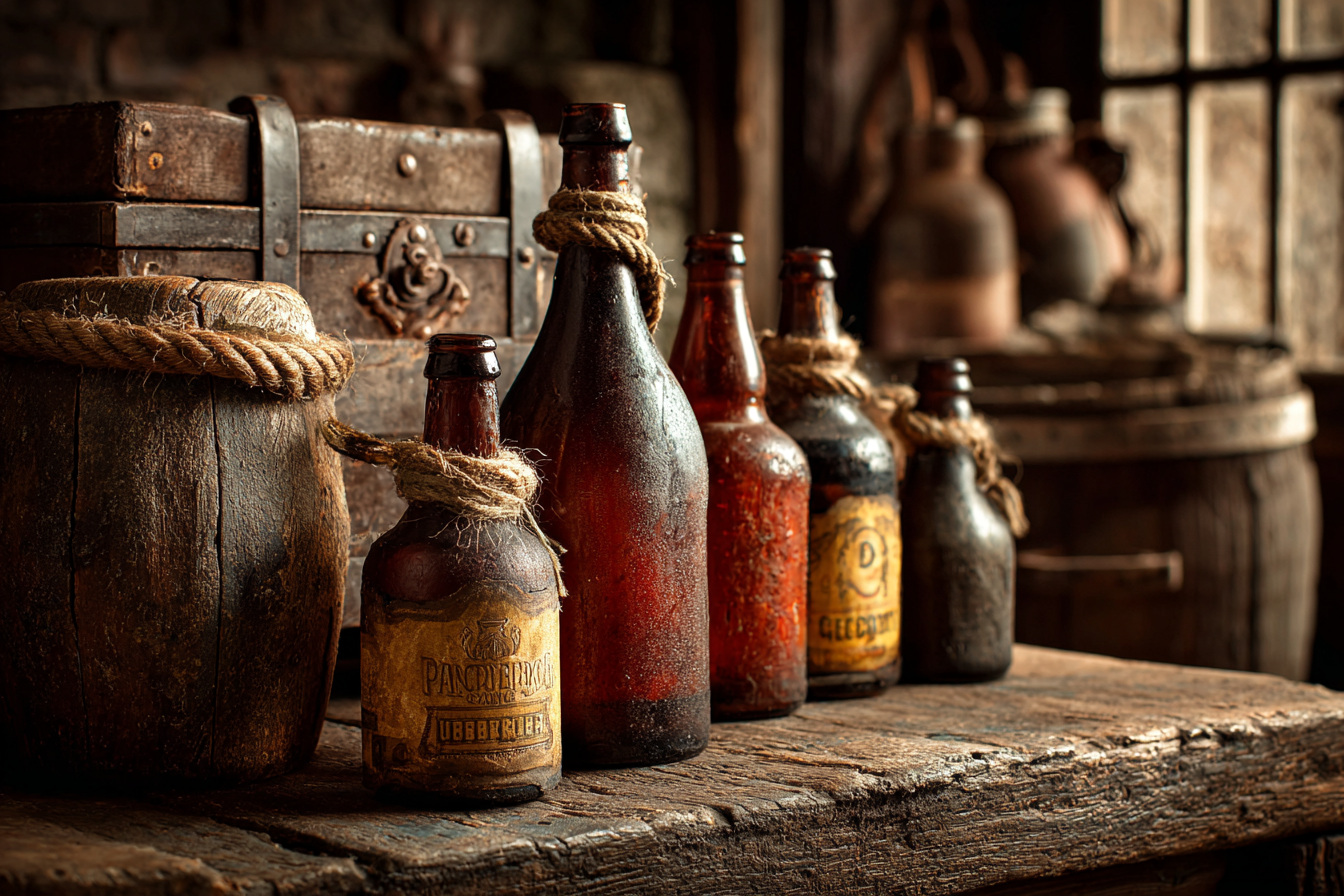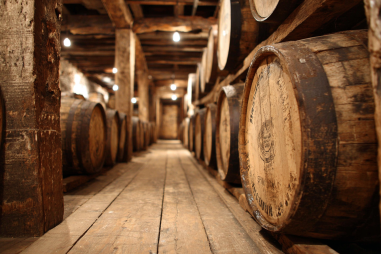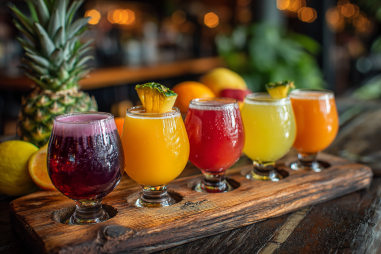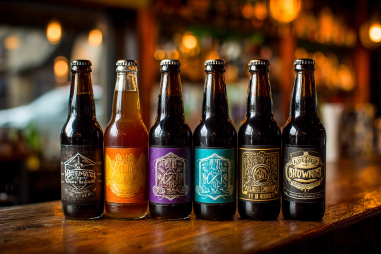Cream Ale is a distinctive style of American beer that combines the light, refreshing qualities of lager with the malt-forward character of ales. While the name might suggest a creamy texture or dairy ingredient, Cream Ale is actually known for its smoothness, mild hop bitterness, and crisp finish. Its appeal lies in its easy drinkability and versatility, making it a popular choice for many beer lovers. To fully appreciate this unique style, it’s worth diving into the captivating history of Cream Ale, from its humble 19th-century origins to the exciting revival it’s experiencing in modern craft beer culture.
Origins of Cream Ale in the 1800s
The story of Cream Ale begins in the mid-1800s, during a period of rapid growth and innovation in the American brewing scene. Immigrants, especially Germans, brought lagers to the United States, creating strong competition for the existing ale styles that were prevalent in the region. Brewers sought to craft a beer that could compete with lagers but still maintain ale yeast fermentation, which was more familiar to many breweries and drinkers at the time.
Cream Ale emerged as a hybrid style devised in the Northeastern United States, particularly in New York and the surrounding states. It was brewed as a light, easy-drinking ale that mimicked the smoothness and clarity of lagers but fermented with ale yeast. The “cream” in its name is believed to refer to the beer’s silky mouthfeel and mellow taste rather than an ingredient. These beers were often marketed as “cream ales” to appeal to a wide audience that enjoyed smoother, less bitter brews.
Traditional Brewing Methods
The traditional approach to brewing Cream Ale involves a unique combination of techniques that set it apart from other ale or lager styles. Typically, it was brewed using ale yeast but was often cold-conditioned or “lagered” after fermentation, helping to mellow the flavors and increase the beer’s clarity. This cold-conditioning process borrowed from lager brewing traditions gave Cream Ale its signature smooth and clean profile.
In terms of ingredients, brewers used pale malts to keep the color light, along with adjuncts such as corn or rice to lighten the body and add a subtle sweetness. Hops were used sparingly to provide balance rather than bitterness, usually leaning towards American hop varieties known for their mild, floral, or slightly citrusy notes.
This hybrid fermentation and conditioning technique, combined with lighter malt and adjunct usage, resulted in a beer that delivered the easy refreshment of a lager but retained some of the fruity esters and fuller flavors that ales produce.
Evolution through the 20th Century
As the 20th century progressed, Cream Ale evolved alongside the changes in the American beer landscape. The rise of industrial brewing and Prohibition left a significant impact on the style. Many smaller breweries that originally produced Cream Ales were forced to close or shift their production, leading to a decline in the style’s prevalence.
Post-Prohibition, Cream Ale found itself overshadowed by the massive popularity of light lagers from major breweries. However, the style survived through the efforts of a few large breweries that continued to produce Cream Ale in scaled-up quantities, helping introduce it to a broader audience.
During the mid-20th century, Cream Ale was often seen as a straightforward, no-frills beer — an easy-drinking option amidst the dominance of light lagers. Its smooth profile made it popular for hot summer days or times when drinkers wanted something lighter but still flavorful. Despite this, it rarely attracted the same level of attention or innovation that many other beer styles received.
Key Breweries That Shaped the Style
Several breweries played pivotal roles in establishing and popularizing Cream Ale. One of the most notable was the Genesee Brewing Company, based in Rochester, New York. Genesee Cream Ale became one of the flagship examples of the style, widely distributed and marking Cream Ale as a recognized category in American beer culture.
Another key player was the Little Kings brand from the Narragansett Brewing Company in Rhode Island, which helped feature Cream Ale as a refreshing summer beer. In addition, Kellerbier and Ballantine Ale contributed to the early evolution of the style by promoting beers with similar characteristics.
These breweries demonstrated that Cream Ale could offer a distinct American alternative to lagers while appealing to a broad consumer base. Their influence helped maintain the style’s presence even during the decades of lager dominance.
Modern Resurgence and Craft Interpretations
In recent years, Cream Ale has experienced a notable renaissance within the craft beer community. As craft brewers explore historical styles and seek to revive traditional recipes with modern twists, Cream Ale’s approachable profile has garnered renewed interest.
Many contemporary brewers are producing Cream Ales that highlight the style’s versatility, experimenting with different malts, hop varieties, and dry-hopping techniques to add complexity while preserving the smooth, crisp character. Some examples include subtle citrus or herbal hop notes, light caramel malt sweetness, and enhanced carbonation to boost refreshing qualities.
This modern resurgence reflects a broader consumer trend towards balanced, easy-drinking beers that can be enjoyed in various settings — from casual gatherings to pairing with diverse foods. Unlike often heavily bitter craft options, Cream Ale offers a gentler alternative that still delivers quality craftsmanship and flavor depth.
Why Cream Ale Remains Relevant Today
Cream Ale’s ability to blend tradition with adaptability is central to its lasting appeal. It fills a niche for drinkers who want something smoother and less intense than many modern craft ales and IPAs but more flavorful than typical light lagers. Its sessionable nature, moderate alcohol content, and balanced taste profile make it suitable for numerous occasions.
Moreover, the revival of Cream Ale aligns perfectly with a growing appreciation for heritage beer styles and local brewing history. As drinkers become more curious about the origins of their beers, styles like Cream Ale provide a meaningful connection to American brewing traditions.
Ultimately, Cream Ale is a testament to how a beer style can evolve over centuries, adapt to changing tastes, and still offer refreshment and enjoyment to new generations of beer enthusiasts.







